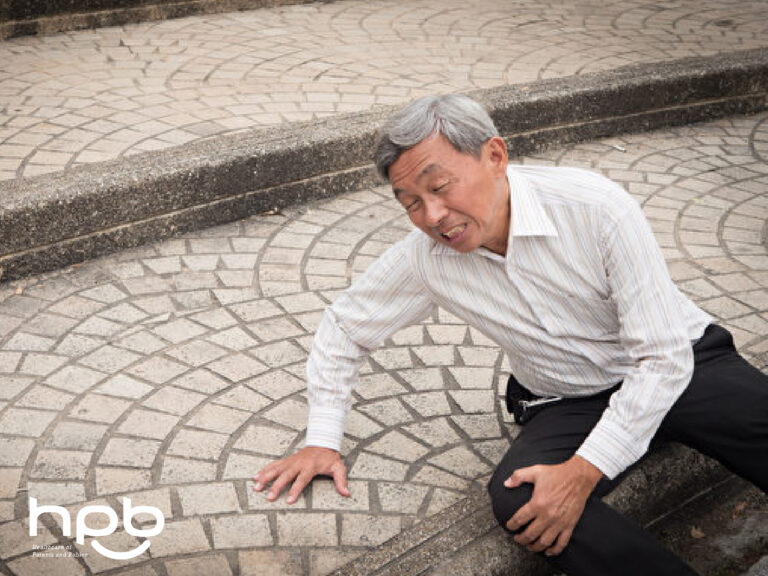Elderly prone to hip fractures from falls, doctor shares tips on prevention
As people age, many elderly individuals no longer walk as smoothly as they used to, and falls can occur unexpectedly. The older a person gets, the higher the risk of serious injury from falls, often requiring emergency medical attention. To address this issue, Dr. Jin Song, a senior family physician in the New York Chinese community, recently shared some tips on preventing falls.
Elderly Patients at Higher Risk of Falls
Cold seasons are the high-risk periods for falls among the elderly. According to the US Behavioral Risk Factor Surveillance System, approximately 27% of people aged 65 and above have records of falls every year, with 10% of them experiencing varying degrees of injuries. Among those aged 80 and above, this proportion increases to 34%.
Statistics also show that women have a higher frequency of falls, especially in institutions such as long-term care facilities, with an incidence rate of up to 50%, and a secondary fall incidence rate of about 60%. In the United States, falls are one of the leading causes of accidental death, ranking seventh among those over 65 years of age.
Falls May Lead to Hip Fractures
Falls can cause varying degrees of harm to the elderly. According to Dr. Song Jin, over half of the patients who fall will experience minor injuries, such as bruises or muscle strains. Others may suffer from serious injuries, with fractures being the most common. Among fracture patients, about 2% have hip fractures, and if not promptly treated, this may lead to paralysis and long-term complications such as sepsis and bedsores.
More severe injuries resulting from falls include lacerations, internal bleeding, and damage to internal organs. The most common internal organ damage occurs to the kidneys, liver, and head.
Dr. Song explains that if patients do not receive appropriate care after a fall, they may also develop other serious complications such as dehydration and kidney failure. After being down for 8 hours, they may even experience rhabdomyolysis, leading to pneumonia, pulmonary bedsores, and other complications. Therefore, patients who fall should promptly have their vital signs measured and undergo a comprehensive physical examination with the help of a doctor.

Do you need to call 911 after a fall?
Different patients may sustain varying degrees of injuries after a fall due to their individual physical conditions. Dr. Song Jin believes that if a patient’s vital signs are normal, they can seek help from a family doctor or specialist nearby for a comprehensive physical examination, including muscle strength and activity assessment, examination of the legs, feet, vision, hearing, and evaluation of the nervous system. The nervous system examination should assess muscle strength, coordination, positional balance, and related nerve examinations.
However, she reminds that if any vital signs are abnormal after a fall, patients should call 911 immediately and be taken to the hospital for examination.
Conducting a Risk Assessment for Effective Fall Prevention
Dr. Song stated that many diseases can lead to falls, and prevention is crucial to avoid injury from sudden falls. Conducting fall risk assessments for individuals aged 65 and older is an important preventative measure in clinical practice.
The following are common high-risk groups, and it is best to have a doctor conduct assessments in advance to help reduce the incidence of falls and prevent them from occurring:
- Patients with dementia: cognitive or awareness assessments should be conducted to evaluate whether there is depression, delirium, or a history of stroke.
- Patients with cardiovascular diseases: it is important to pay attention to whether they have orthostatic hypotension.
- Patients with movement disorders: it is important to check for the presence of muscle weakness, joint diseases, osteoporosis, etc.
- Patients with sensory impairments, especially those with diabetes: it is important to check for various complications such as peripheral neuropathy, vestibular dysfunction, or visual impairments such as cataracts.
- Patients taking multiple medications: many elderly individuals take multiple medications, and the interactions between these medications can also increase the risk of falls, such as antipsychotics, sedatives, and opioid painkillers.
- Individuals with decreased mobility: some elderly individuals may not have major complications from their illnesses, but as they age, their daily mobility decreases, leading to mobility impairments. For this group of people, the fall risk caused by the surrounding environment cannot be ignored. It is important to consider factors such as loose carpets, slippery floors, dim lighting, small spaces, and cluttered obstacles in their living environment.
- Women should pay more attention to fall prevention: Women aged 65 and older are at a higher risk of falls and injury due to a higher proportion of osteoporosis. Dr. Song recommends that these individuals undergo bone density scans every one to two years and supplement with calcium, vitamin D, and other necessary supplements in a timely manner.
The complete article is from Epoch Times New York Business News.
